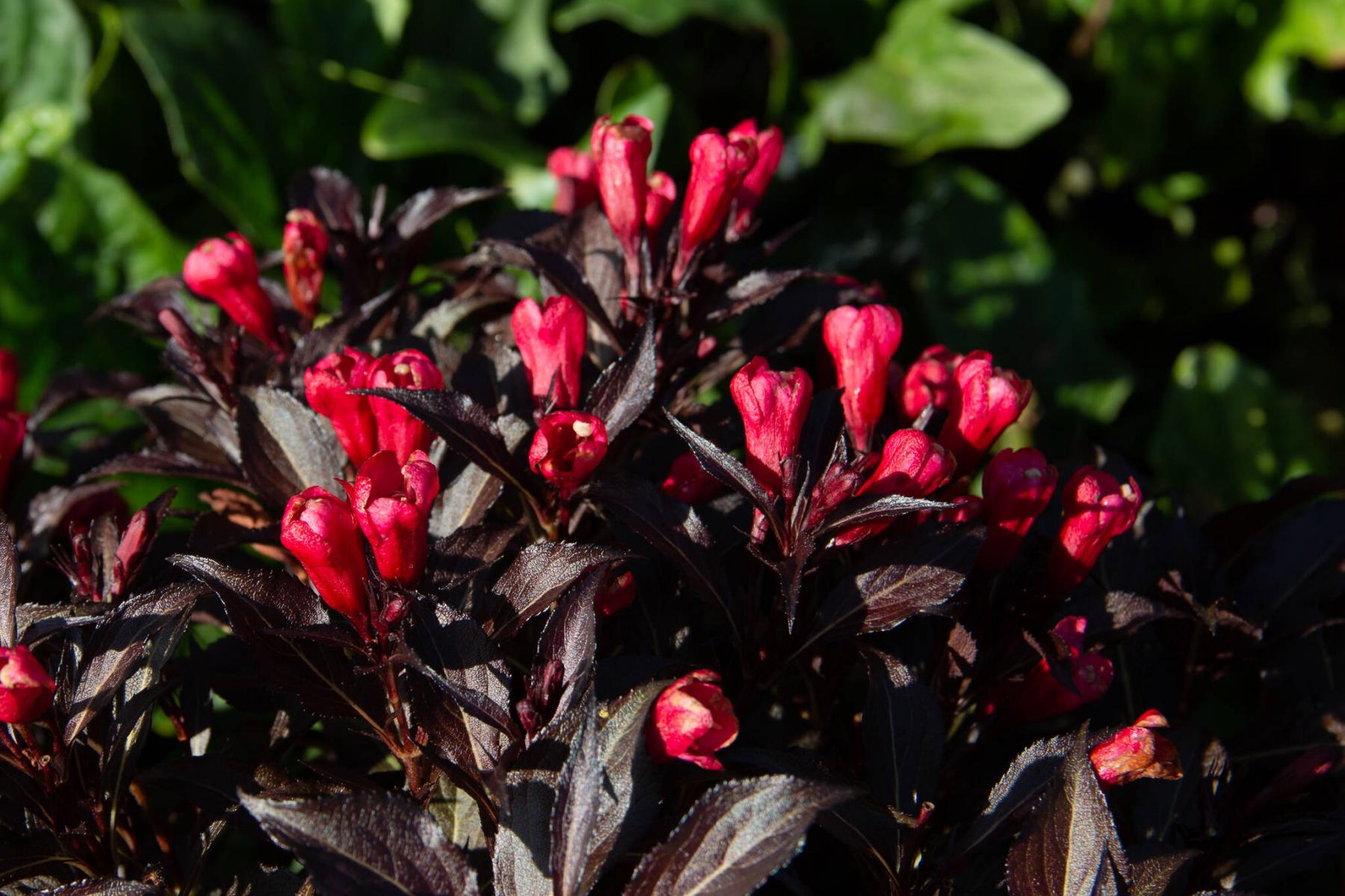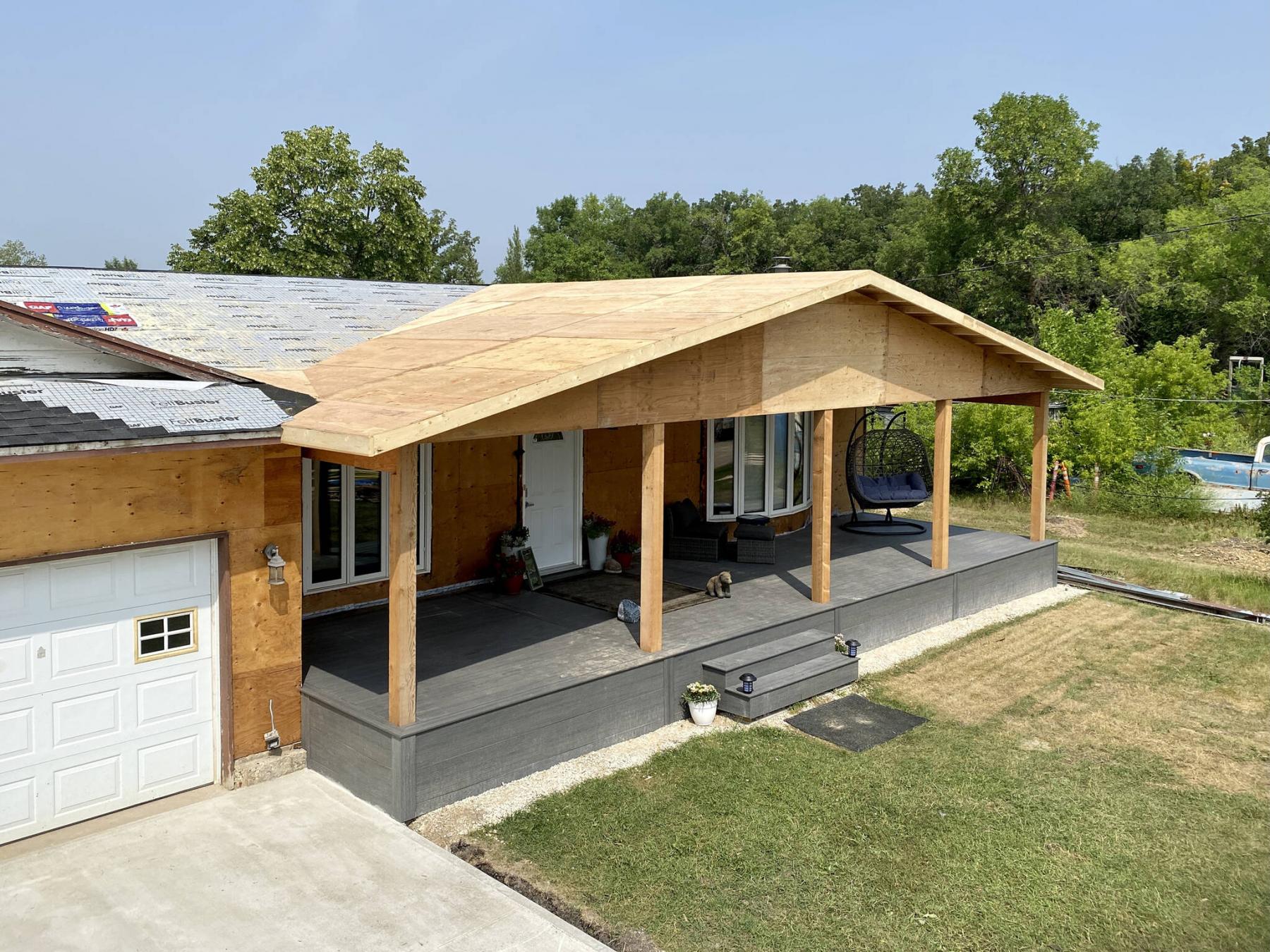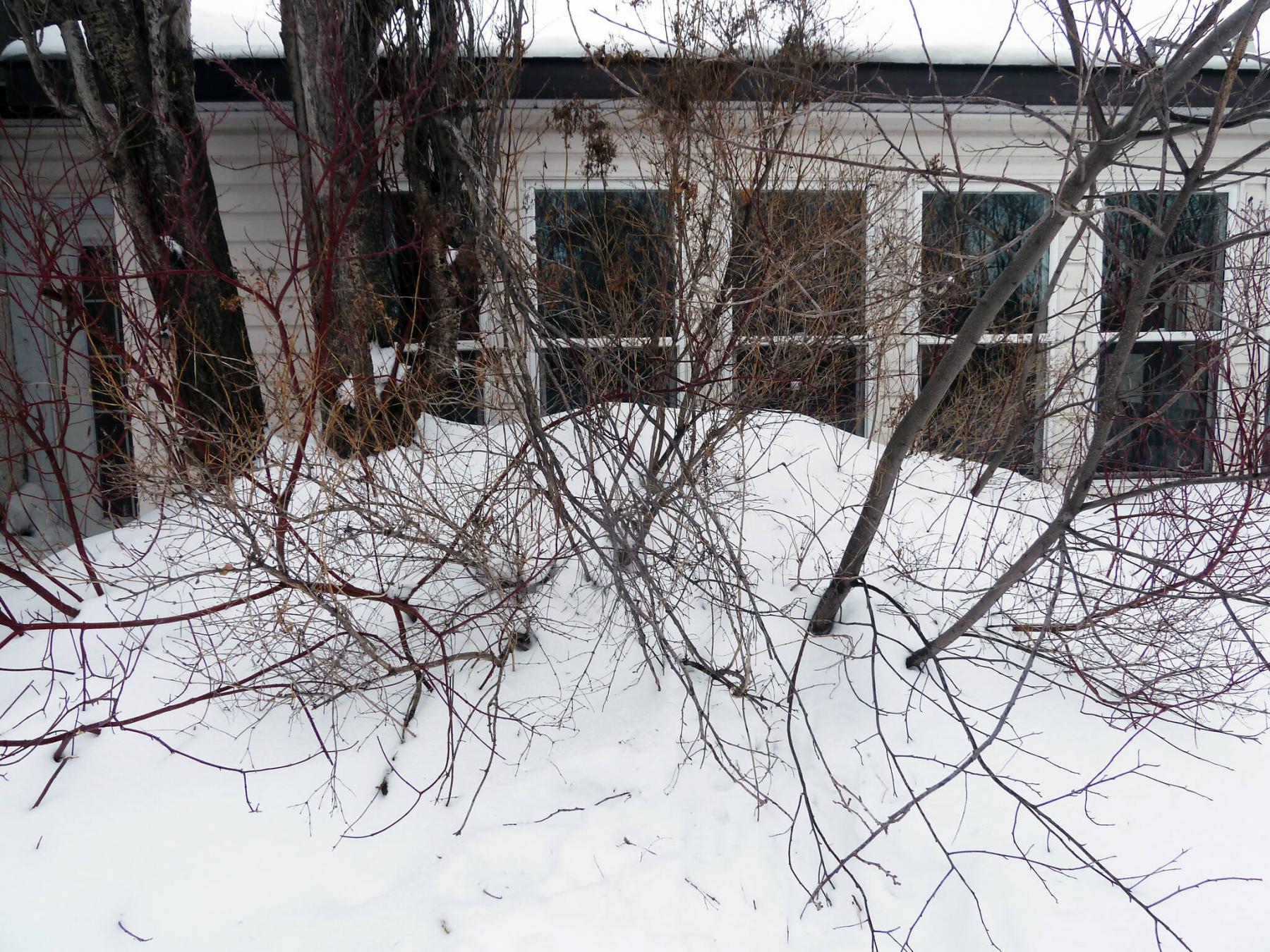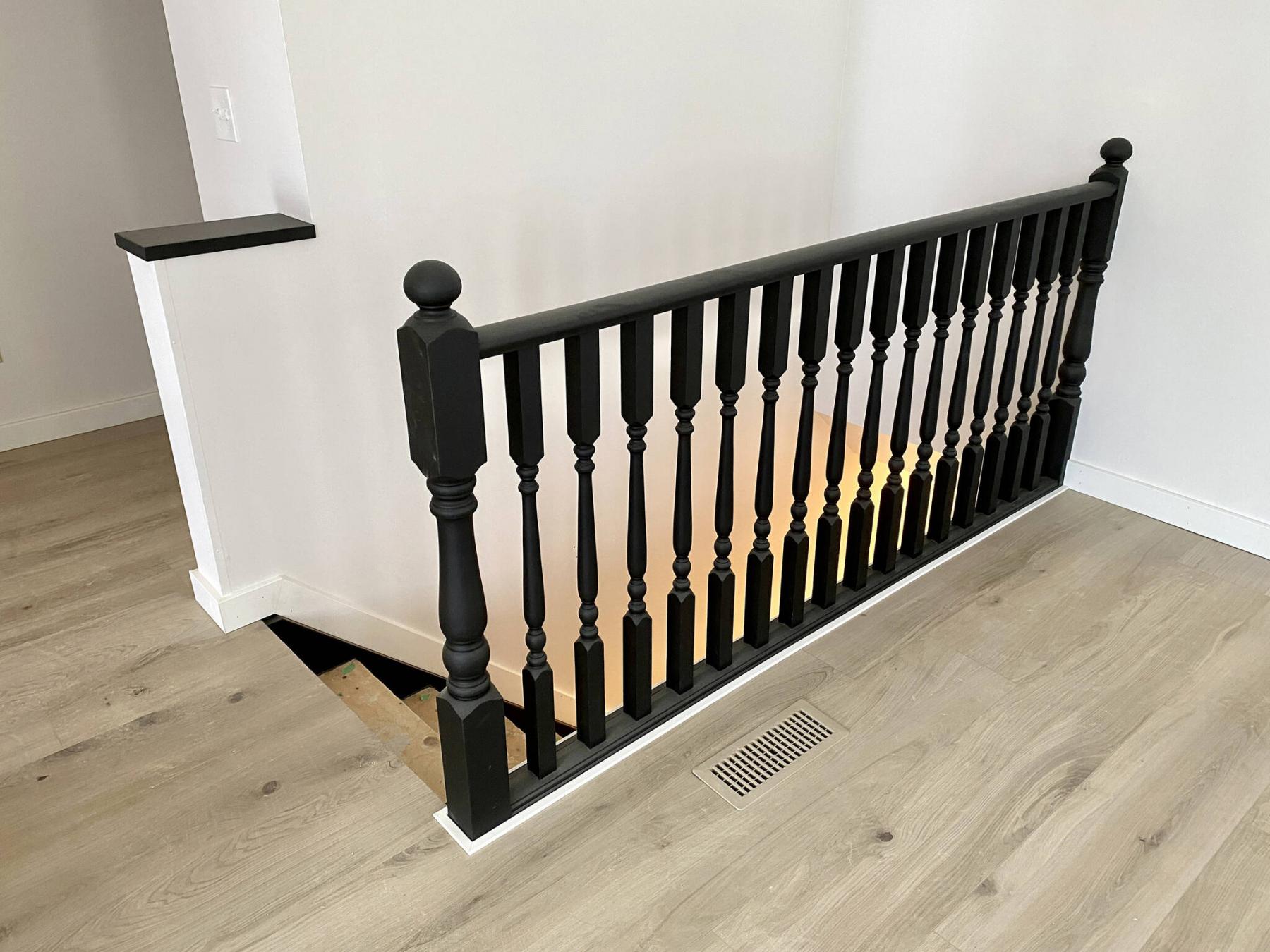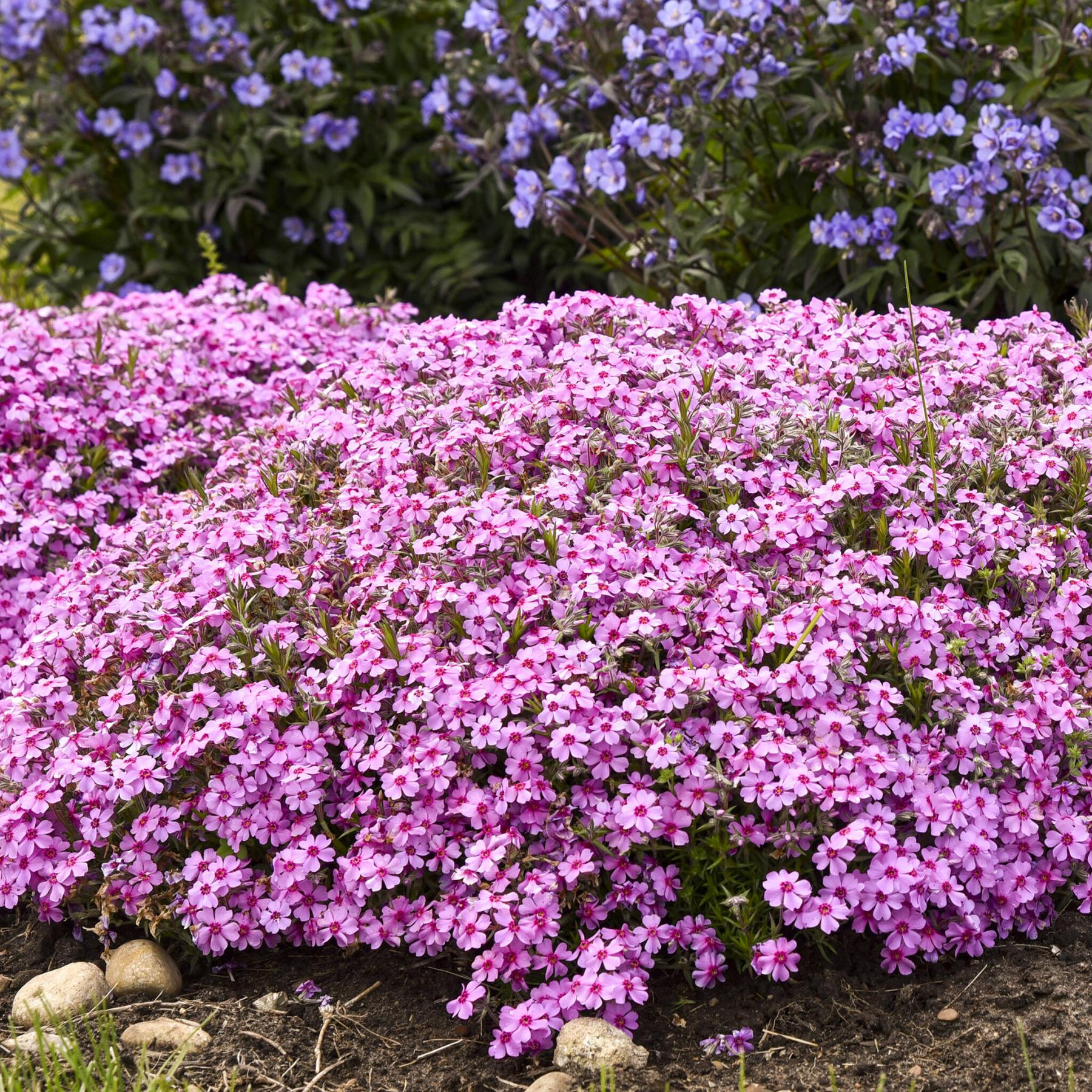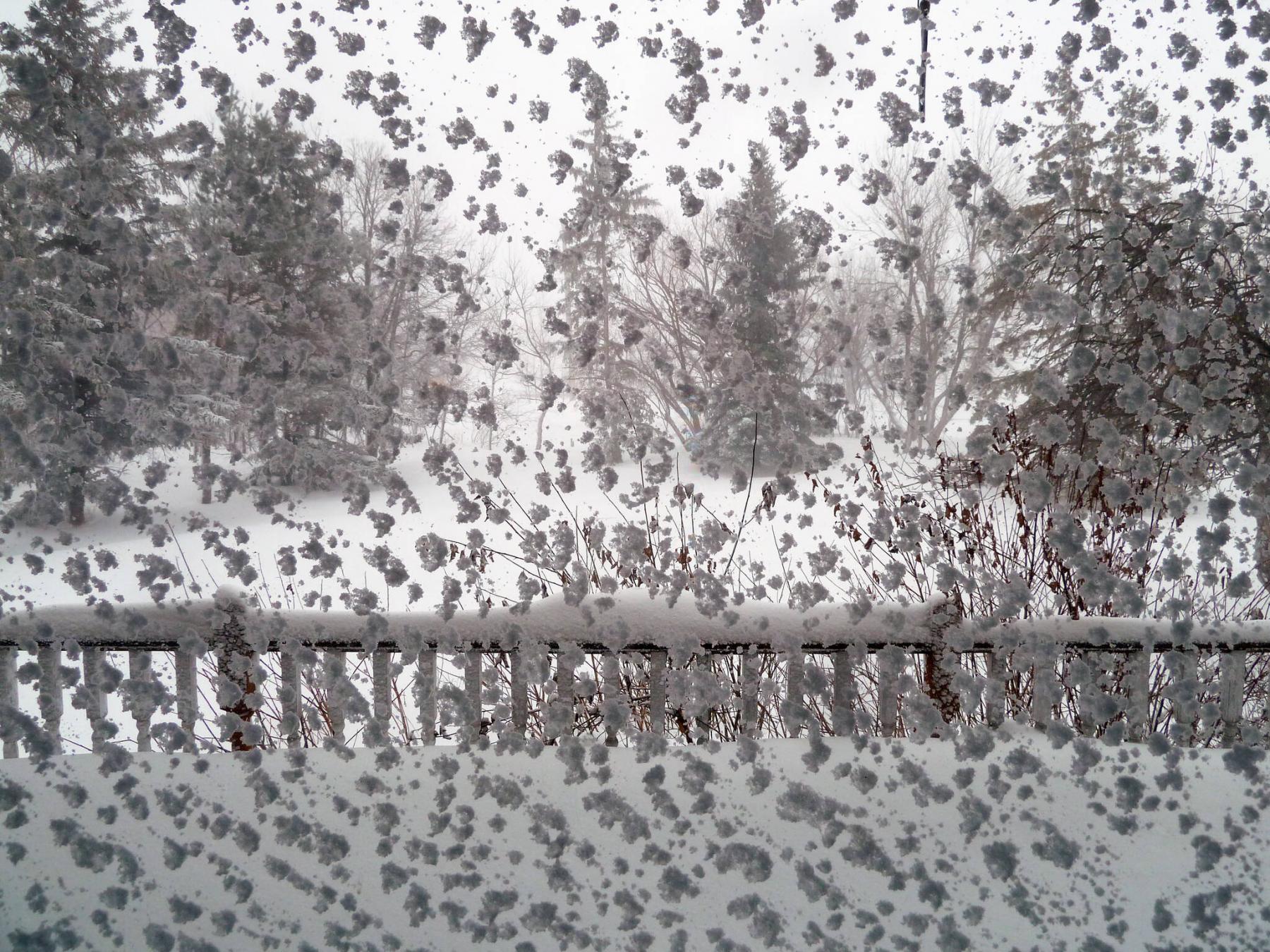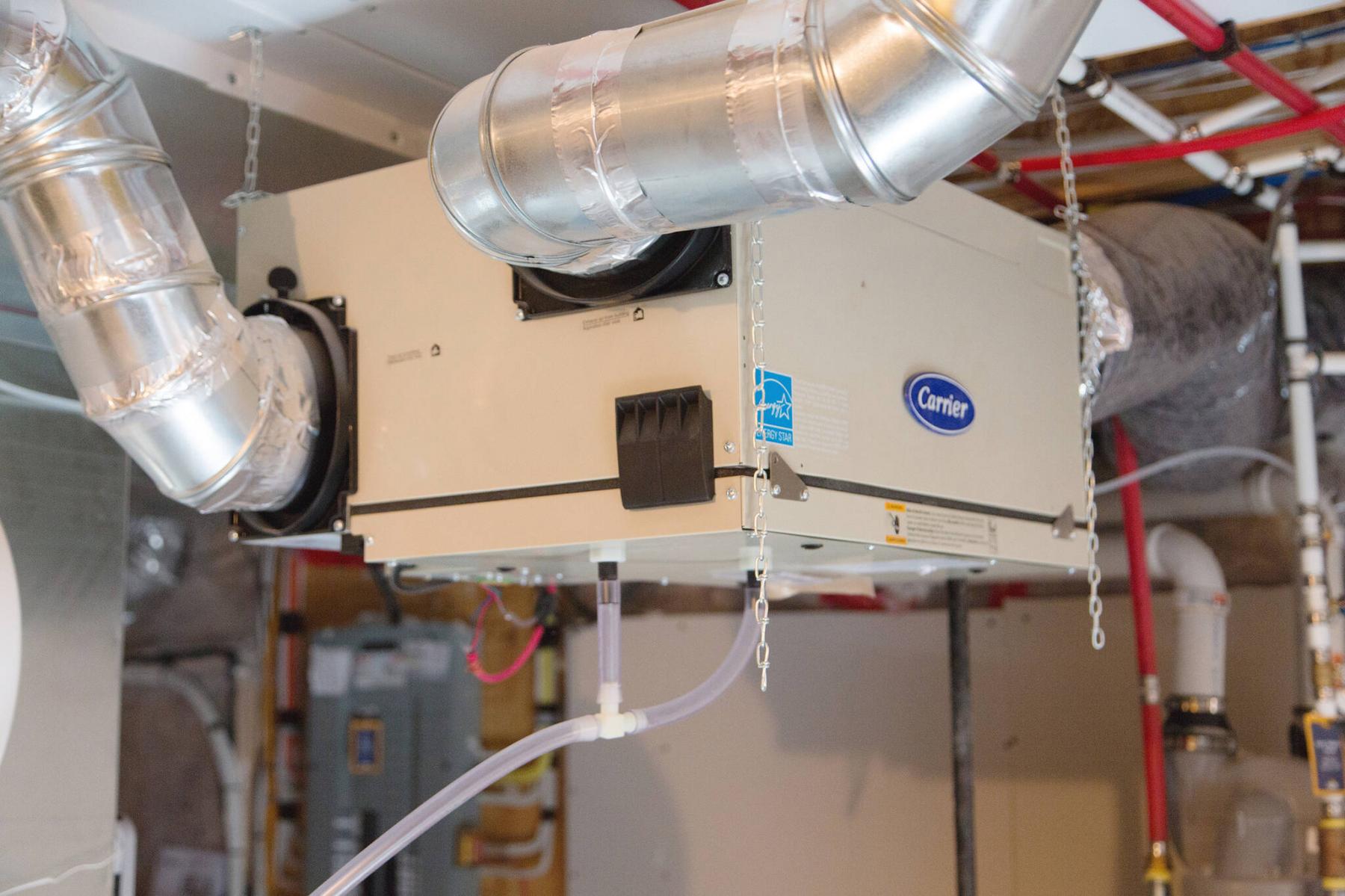Renovation & Design
Renovation & Design
Homemade TV dinners heartfelt and wholesome
Question: My daughter recently moved into an apartment, while she goes to school. Is it possible to prepare homemade TV dinners for her to keep in her freezer and microwave when she has time? If so, what kinds of foods should I use? Alex
Answer: There are so many options to satisfy your kind gesture. By making your own frozen dinners you have the opportunity to reduce salt, control ingredients such as choice of oils and save money. Begin by purchasing plastic freezer and microwave-safe dishes with compartments. Foods that freeze well are leftover meat with or without gravy, mashed potatoes, cooked rice and pastas, casseroles, sauces, vegetables and baking for dessert. Make sure to clearly label each dish by title and date. After food has been packaged into plastic containers, wrap with foil to prevent freezer burn. Extra tips: Veggies should be slightly undercooked before adding them to meals. Experiment with foods by freezing small portions to see how well they taste once thawed and heated. Foods to avoid lettuce, watermelon, pineapple, cucumber, raw tomatoes, pudding, custards, cream cheese, gelatin, and egg yolks.
Question: I recently moved into an old apartment, and the place is filthy. What is the best way to clean a grimy shower head? Dayna
Answer: Step 1: Scrub the holes with a wet kitchen scrubber. Step 2: Pour a solution of 1/2 cup (125 mL) white vinegar and 1/2 cup (125 mL) water into a plastic bag. Step 3: Place the plastic bag around the shower head, so that the holes are immersed in the solution. Step 4: Secure the plastic bag with an elastic band and leave for about one hour. Step 5: Remove the bag and wipe the excess debris. Step 6: Run the shower as normal.
Feedback from Friendly Manitobans
Re: Painting appliances
I once heard that you could renew appliance appearance by having them repainted at an auto body shop. — Tamara
Re: Crazy glue on fingers
I just read your response to the person who asked how to get crazy glue off fingers. Those techniques may work but there is a faster, better way if you have it on hand. The easiest and best trick is to promptly immerse your fingers in a glass utensil (such as a custard cup placed in a sink) that contains nail polish remover. Works quickly and painlessly. — Arlene
Re: Cleaning leather footwear
Before I go out, I always check to make sure that my leather shoes or boots are clean. If they are not clean, I buff them with WD-40 and a soft cloth. Doing this makes them shiny, and best of all, waterproof. — Frankie
Easy strawberry dessert pizza
In a bowl combine 1-cup white flour and half cup icing sugar. Stir in half cup melted butter. Press into 12 inch pizza pan. Bake at 350 for 15 mins. Cool. Beat together 1-8 ounce pkg. softened cream cheese, and half cup white sugar (oh my mouth is watering already). Spread over cooled cookie crust. Arrange 3 cups sliced strawberries on top of cream cheese layer. Glaze: In a pot stir together half cup sugar, 1 tbsp. cornstarch and half cup water. Stir and heat on medium until thick. Cool slightly and spoon over pizza. Chill for two hours, cut into wedges and serve.
Note: Every user assumes all risks of injury or damage resulting from the implementation of any suggestions in this column. Test all products on an inconspicuous area first.
Reena Nerbas is a popular motivational presenter for large and small groups; check out her website: reena.ca. Have a great suggestion or tip? Please send an email.
info@reena.ca
Renovation & Design
Roof snow removal typically dependent on its condition
Question: I own a small apartment building with six suites. We have had a lot of snow this year. Should I get the flat roof on my building shoveled? A roofing company advised that I should.
Please let me know what you think.
Thanks, Bill Keith
Answer: Shovelling a thick, heavy layer of snow from a roof is never a bad idea, but may only be necessary if it poses a danger of leakage or damage. Determining that will help you decide whether it is worth spending the money and effort.
We have indeed had above average frequency and amounts of snow this year, which is more than welcome after the recent extremely dry weather. While this abundance will help replenish the moisture in the soil, rivers, and lakes when it melts, it can be a hazard on some rooftops. Because your multi-family building has a flat slope roof, it may be much more prone to leakage than a typical pitched roof. This will largely depend on the type and condition of roofing materials, and the type of drainage.
Many older apartment buildings were constructed with what appear to be flat roofs, but they are not really flat. They should be slightly raised in some areas, with minimal slopes downward to others. The idea is that the high points in the roof will more easily drain to the lower ones, where there should be some form of drainage. In older buildings the roofing is typically constructed of multiple layers, with a granular cover, commonly known as tar and gravel. The individual layers are made up of bitumen impregnated paper which are held together, and to the roof sheathing, with melted tar or bitumen. The hot tar is mopped on to the individual layers, before the next layer of "felt" is applied. The final coat of heated liquid bitumen is then covered with a thin layer of small stones, to protect the surface from mechanical damage and UV light from the sun. While this older method is very labour-intensive, and costly, it is also very durable.
One of the main problems with an older tar and gravel roof, as described above, is that it may not wear evenly over its lifetime. One that is properly sloped from the middle to the perimeter to allow water to flow to outside drains, or scuppers, may not stay that way. Over time, the roofing can wear or shift, leaving lower areas near the middle of the roof. This can lead to excess water remaining in these low spots, for several days after heavy rains or melted snow. That type of lengthy ponding is much more likely to lead to a roof leak. If this water can’t easily make its way to the scuppers, or internal drains if present, there is much more chance it will sneak into a small hole or gap in the multiple layer roofing. So, if your roof is older and deteriorated, with frequent ponding, getting rid of excessive snow before it melts is warranted.
Also, any penetrations of the roof from plumbing or heating vents, wires, or other mechanical items, should have proper flashing and be well sealed. In a typical year, many of these flashings may be high enough to prevent leakage from several centimeters of accumulated snow. But in a winter like this, where layer upon layer of snow has built up, they may not be high enough to prevent leakage near the top of the fixtures. Especially with skylights, attic vents, roof access hatches, or other rooftop mountings, this may be a strong possibility. A visual inspection of the roof, by a properly trained and insured roofer, should help you determine whether this may occur.
If your roofing is newer and is single-ply modified bitumen, or equivalent modern materials designed for flat roofs, then leakage is less likely. Unfortunately, the condition of the roofing may only be determined in warmer seasons, when it is not covered with snow and ice. Removal of the bulk of the snow may help determine this, but only in warmer weather closer to spring. It may be prudent to have the snow shovelled just as it is beginning to melt, to address this concern.
The other reason to manually remove this season’s above-average amount of snow from the building’s roof is to minimize potential damage from the weight. As the weather warms, the moisture content of the snow will increase and so will the density. Light, fluffy, wind-blown accumulations at -20 C may turn into extremely heavy drifts with above freezing temps. This should mainly be a concern for older structures, or ones that have previously had structural issues or modifications in the past. Most buildings of this type were designed to support even the heaviest snow loads, but things do deteriorate or change over time. Especially if you have had upgrades to structural components or roof sheathing in the past, due to moisture damage, then eliminating a potential problem by removing the snow may be well worth it.
The requirement for excess snow removal from a flat-slope roof will largely depend on the condition of the roof coverings, drainage, and structural integrity. Just like maintenance on other portions of the building, if these have been kept in good condition, there may be no need for this task. On the other hand, if any of these are older or have been neglected, hiring a safety-conscious roofer to remove the heavy snow may be a wise investment.
Ari Marantz is the owner of Trained Eye Home Inspection Ltd. and a Registered Home Inspector (RHI)(cahpi.ca). Questions can be emailed to the address below. Ari can be reached at 204-291-5358 or check out his website at trainedeye.ca.
trainedeye@iname.com
Renovation & Design
Wash throws in cold water and dry on low heat
Question: I received a beautiful, fluffy throw blanket for Christmas last year. How should I wash it so that it doesn’t lose its softness? Cheri
Answer: Wash your throws by themselves so that the fuzz from the blanket does not jump onto your clothing. Use cold water and dry on the lowest heat setting, or air fluff to dry. Use a small amount of detergent. Some people like to add fabric softener to the load, but I prefer to wash without softener.
Question: Does baking powder or baking soda make food crispy? Corbett
Answer: Baking powder is a leavening agent which is made by combining baking soda, cream of tartar and cornstarch. Baking powder creates little bubbles when combined with oil and dries the skin, leaving it crispy and crunchy. Baking soda can also be used to make foods crispy. For best results, activate baking soda by combining it with a food acid such as vinegar or lemon juice.
Question: What is your trick to get crazy glue off fingers? Henry
Answer: When this happens soak (and I mean soak your fingers for at least 15 minutes) in either cola or the hottest water you can stand or acetone. Gently pry the glue off your fingers and wash.
Question: Is it appropriate to tip a handyman and if so, how much is acceptable? Mary
Answer: Whether accessing the services of a handy person, hair stylist, restaurant, spa, delivery driver, coat checker, hotel or health and lifestyle service, begin by asking yourself how you would rate the service. In other words, decide if you were happy with the service. Also, remind yourself that many service providers rely on tip money to support themselves. The standard tip rate in Manitoba is between 15 and 20 per cent. Be aware, some establishments automatically add the tip to the bill.
Question: We own a white refrigerator. It has the “rough” coating on the front with some black marks that have been embedded into the material. Cleaning doesn’t seem to do the trick, so I think I must paint it. The hardware store wasn’t very helpful and told me that nothing can be done. Do you know of any paint or finish that I could apply to it to make it look like new? David
Answer: I painted appliances once and they looked great for the first few months but after a while they looked worse than before. However, that was a long time ago and so if you are intending to paint, check with a reputable paint specialist for the best paint option. I am also wondering if you have tried erasing the black marks with a rubber eraser or Mr. Clean Magic Eraser or a paste of baking soda and water or Bar Keepers Friend, or WD-40 or Goo Gone (worth a try). Whatever you choose, please test on an inconspicuous area first.
Light-bulb moments
A while ago you had an article about how to remove tea stains off your teacups (works for coffee too) use the Mr. Magic Eraser. Works great and easy too. — Sheila
My hands were so dry this winter and I couldn’t figure out why. I then switched from washing my hands with dish soap to actual liquid hand soap. Now my hands are back to normal. — Jordan
I clip plastic bread tags to electrical cords to identify which cord is plugged into each outlet. I use a marker to write on the bread tag i.e., printer, computer, mouse etc. — Sangeet
Note: Every user assumes all risks of injury or damage resulting from the implementation of any suggestions in this column. Test all products on an inconspicuous area first.
Have a great suggestion or tip? Please send an email at: info@reena.ca. Reena Nerbas is a popular motivational presenter for large and small groups; check out her website: reena.ca.
Renovation & Design
Aluminum wiring should be inspected, repaired by electrician
Question: I’m writing to enquire about aluminum wiring. It was permitted by code to be installed in many apartments and homes during the 1970s and today is even used by Manitoba Hydro for heavy gauge service cables. Insurers love to add a few zeros to their quotes when insuring a home with it. As many homes from that era are attached, apartments, row housing and side-by-sides, many homeowners are unable to do any rewiring work on their own homes. Electricians also love to add similar zeros when asked to mitigate it in an attached residence. It also has to be declared on a real estate condition report when buying or selling a home.
Just what is wrong with it? Does a home require complete rewiring and what is the most economical way to resolve it? Aluminum seems to be a pariah, almost as bad as asbestos! I’d love to see your comments published. Thank you,
Bob Sales.
Answer: Aluminum wiring issues have been known for decades, but have recently been targeted by the insurance industry. Most homes may only require inspection and modification to all junctions by a licensed electrician, but others may require additional repairs to satisfy local electrical safety standards and specific insurer’s criteria.
Aluminum wiring was commonly used for branch circuit wiring in residential construction from the mid-60s to the mid-70s. In our area, I normally see it in homes built between 1967 and 1972-74. The reason for its use was economics, as it was less costly than copper wiring. It is also lighter than copper, but does not conduct electricity as well. For that reason, aluminum wire is typically one size larger than its copper counterpart, for the same amperage circuit. It is often easily identified by the larger, silver coloured wiring and AL or Aluminum stamps on the plastic or cloth sheathing. It fell out of favour with builders due to several fire safety related issues.
You are correct that aluminium is still used today in several applications, particularly larger cables. This is due to the weight relative to copper wiring. Larger cables, often used by public utilities for outdoor use, can be quite difficult to transport and install in certain applications. Using aluminum wiring has that benefit, as well as its resistance to corrosion.
The main problem with aluminum wiring used in residential applications is found at duplex receptacles. Some of the original receptacles rated for aluminium (AL/CU) had issues with corrosion due to incompatibility between the alloys used in the receptacles and the aluminum wire. When this corrosion occurs in sufficient amounts, small gaps may develop between the wire conductors and the receptacle, where the bolts hold the wires. When the receptacle is powered, this can cause arcing, which will often lead to overheating, melted wire sheathing, and fires at the point of the junction. Fire prevention is the reason for required remediation of aluminum wiring, whether mandated by insurance providers, or others. Newer receptacles were developed (CO/ALR) which help prevent this issue, but may still be subject to overheating and arcing in some circumstances. It is rare that the main sections of the wiring are the cause of overheating, unless it has been damaged. For this reason, it is normally not required to remove large sections of wire, unless pervasive overheating is found.
While receptacles are the main culprits, the same issue could occur at other electrical devices and fixtures. Circuit breakers and electrical panels are probably the second most common location to find evidence of overheated wiring. I have inspected several electrical panels where corrosion and/or melted sheathing is seen, primarily at the neutral bus, but also at the breakers. Often, this is visible at the larger cables, which are required to be coated in anti-oxidant paste at all connections. This paste, often called grease, remains pliable and insulates connections and exposed wiring from exposure to air, and should last for many years. This helps prevent both corrosion and arcing at junctions and may even be used in upgrades at all connections, even with smaller wires. When this paste is absent, serious defects are much more likely.
Some electricians believe that many of the issues with aluminum wire occur due to poor installation techniques. Because the wiring is much softer than copper, it can easily be compressed when tightening bolts at receptacles, switches, and other fixtures. If it is squished flat and then bent to fit into a junction box, it may become much thinner, or even cracked, near the connection point. Also, overtightening of the wire inside wire nut connectors can have the same result. Both are a recipe for arcing, and several of the melted wires I have found attached to receptacles appear to have this defect. Regardless, remediation typically incudes removal of the damaged section of wire, replacement of the electrical device or fixture, and repairs using anti-oxidant paste and properly rated devices. Often, pig-tailing is done, where a short section of copper wire is bolted to the fixture, with the other end connected to the aluminum wire, using properly rated wire nuts and grease.
All homes built with aluminum wiring should have the electrical panels and all duplex receptacles inspected, to ensure they have properly rated devices and have no evidence of overheating or excessive corrosion. If problems are found in those areas, a more thorough inspection of all the connections should be undertaken, and repairs done by a licensed Red Seal electrician. Insurance companies may require either of these approaches, along with a signed letter from the electrician, to fully cover a home after purchase or when issuing a new policy.
Ari Marantz is the owner of Trained Eye Home Inspection Ltd. and a Registered Home Inspector (RHI)(cahpi.ca). Questions can be emailed to the address below. Ari can be reached at 204-291-5358 or check out his website at trainedeye.ca.
trainedeye@iname.com

